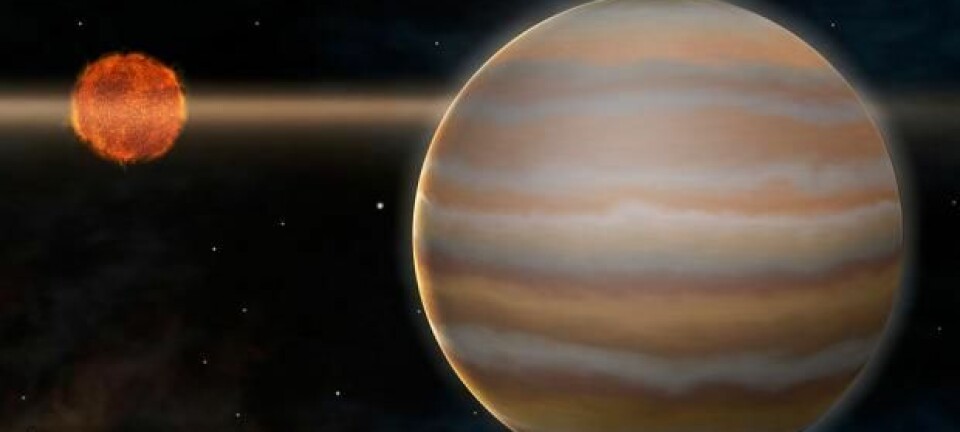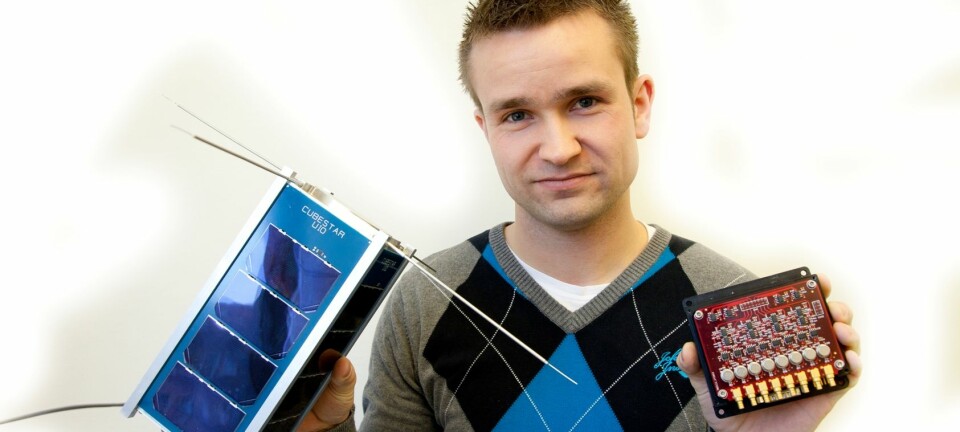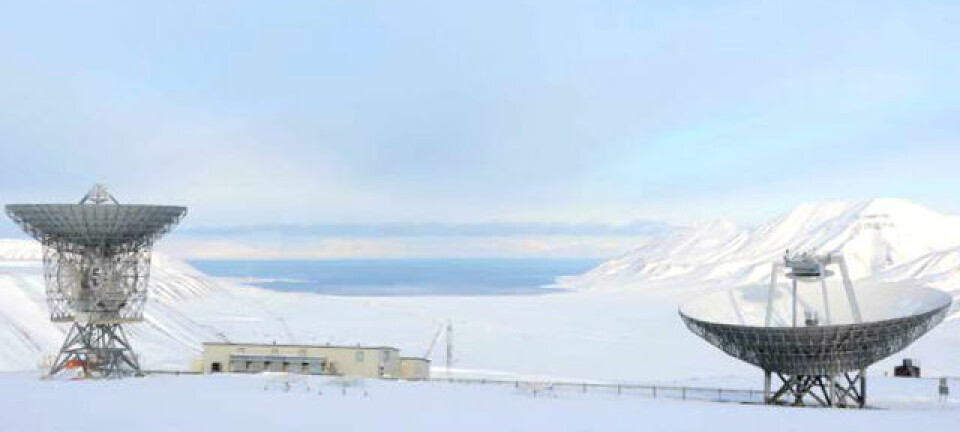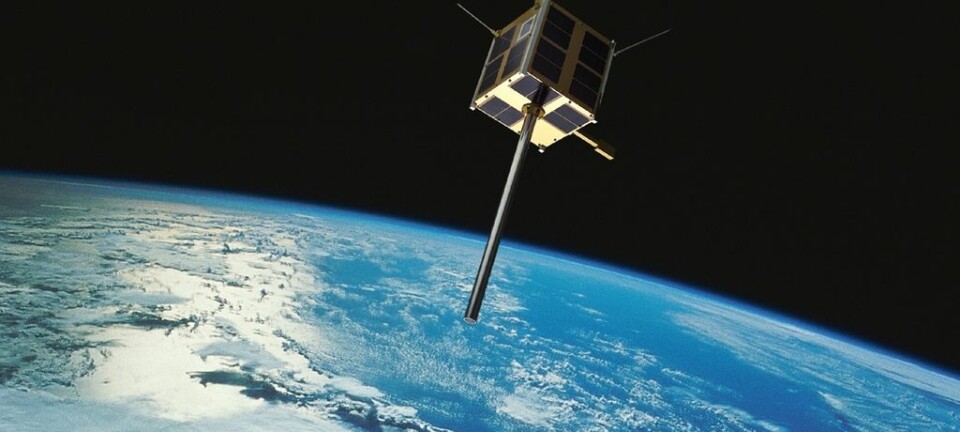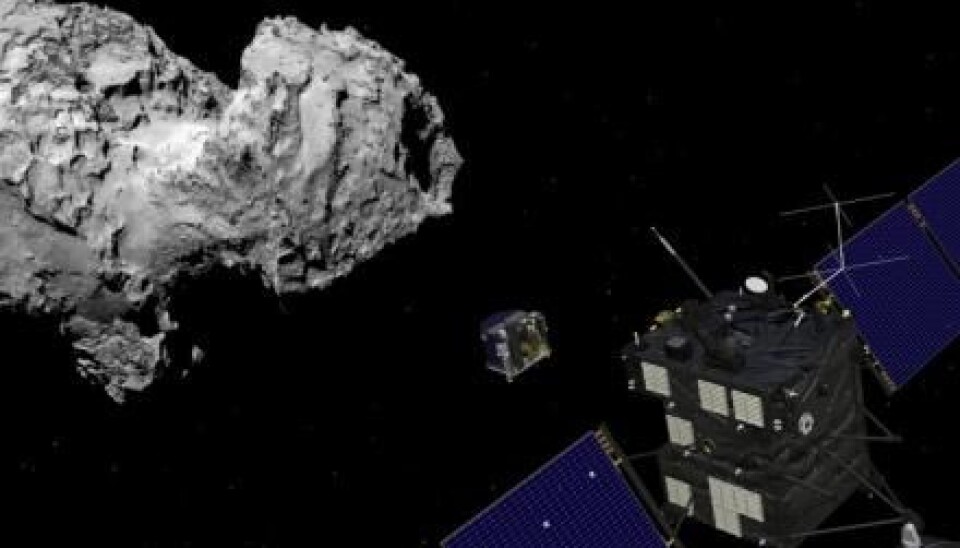
Danish scientist hopes to find origins of life on comet
After her ten-year voyage the Rosetta spacecraft is preparing to land today on the comet 67P/ Churyumov-Gerasimenko. Scientists at Aarhus University can't wait to get their hands on the data from the mission. It may well tell the story of how life came to earth.
This is a very special day for space scientists across the world.
After a voyage through space taking 10 years, the Rosetta spacecraft will release its high-tech baby – a landing module named Philae – which, by means of a daring manoeuvre, will latch onto the comet 67P/ Churyumov-Gerasimenko.
Scientists hope that Philae will collect groundbreaking data from the comet, providing answers to how the universe was created, where Earth’s oceans come from – perhaps even where we come from.
It is the last question in particular that Søren Vrønning, the Danish Scientist of the Department of Physics and Astronomy at Aarhus University, is eager to explore.
Personally I feel like people probably did when we landed on the Moon. Everybody's insanely excited.
For this he will be using the state of the art synchrotron ring, ASTRID 2, located in the basement of Aarhus University.
“It's the question of the origin of life in particular that interests me. It's something we humans have always asked ourselves – where do we come from? I'm hoping we get some exciting answers from Rosetta.”
Did life on earth come with comets?
Vrønning Hoffmann knows what he hopes to find on the comet: Amino acids. Amino acids may turn out to be the key to the source of life, he explains.
Amino acids have already been found on remnants of comets that have landed on Earth in the form of meteorites.
For this reason, scientists are "reasonably convinced" that amino acids will also be found on comets like 67P/ Churyumov-Gerasimenko.
"With the knowledge we possess at this point in time I think it's very difficult not to consider whether it was something from outer space that gave rise to the emergence of life on Earth,” says Vrønning Hoffmann.
Shielded from ultraviolet light
On earth we are shielded from ultraviolet light coming from space by the Earth's atmosphere.
But comets don't have this kind of protection, explains Vrønning Hoffmann, which is one reason why some scientists believe comets may have brought amino acids to our planet – and with them life's building blocks.
When the scientists test this theory using the instruments on board Philae, they will examine whether the amino acids on the comet – if there are any, are chiral in one way or other; whether they are left- or right-handed.
Vrønning Hoffmann's own experiments suggest that the kind of ultraviolet light that hits a amino acid determines whether it becomes right- or left-handed.
Looking at the formation of amino acids
In the basement beneath Aarhus University he is experimenting with a new, advanced light source – ASTRID 2 – which distinguishes itself by being particularly intense in the ultraviolet field.
ASTRID 2 can control which type of ultraviolet light is emitted – whether, for instance, the light is omitted as a wave that oscillates horizontally (horizontally polarised light), or whether it oscillates in a circle (circularly polarised light).
"We have shown that it's possible to create an excess of left-handed amino acids using circularly polarised light."
This means that if a comet passes an area of space with circularly polarised light this might create an excess of left-handed amino acids.
"This is the whole basis of our research; that ultraviolet light doesn't just help to create amino acids – but if it is circularly polarised it will result in an excess of one form of amino acid in relation to the other.”
The theory is that this may be an indication that 'left-handed' amino acids took shape somewhere else than earth and only later reached here.
Stench of amino acid near the comet
It is not until the Philae craft begins to send data down to earth that we can know for sure whether there are amino acids onboard the comet or not.
However, Philae's mother craft Rosetta has already sent data to Earth that suggests the possibility of amino acids being found on 67P/ Churyumov-Gerasimenko.
According to a press release from the University of Bern in Switzerland, an analysis of the space around the comet "stinks of rotten eggs (hydrogen sulphide) and horse box (ammonia)," as well as of formaldehyde, hydrogen cyanide and methanol (alcohol), sulphur dioxide and carbon disulphide.
"Precisely all these substances are the building blocks of amino acids, so I am really pleased about that result. This seriously increases our chance of finding amino acids," says Vrønning Hoffmann.
---------------
Follow Rosetta on her website and on Videnskab.dk.
Translated by: Hugh Matthews
